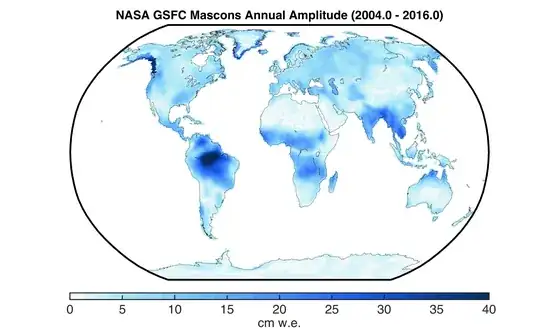Yes. It's called a "betavoltaic" battery (there are also theoretical alpha- and gamma-voltaics devices, but betavoltaic batteries - or rectius, unreachargeable betavoltaic cells - are known to already exist).
To build an "eternal" battery, you'd use a very large quantity of 128Te (or any other "barely radioactive" element) surrounded by substances that react to its double beta decay by generating photons, and suitably doped semiconductor layers (essentially a photovoltaic cell). The tellurium will decay very slowly, supplying energy.
Since 128Te is unbelievably long-lived, the energy generated is minuscule. So, you will need a lot of tellurium.
On the other end of the spectrum, plutonium 238 decays in less than 90 years, and its activity (more than 600 GBq/g) and energy output is high enough to keep a nugget of PuO red-hot.
A large enough deposit of uranium ore should be enough to keep Xenu locked for the foreseeable life of most current generation's stars.
The quantity of material required is probably pretty much constant with the power requirement over the same period of time; that is, if you double the decay rate you do double the power, and require half the quantity, but then you need to double that again since otherwise it would burn in half the time.
Raw calculations for 235U
From Wikipedia I get uranium 235's half life, about 700 million years. So if I have a kilogram of 235U, in 700 million years I'll have half a kilo, after 1.4 billion years 250g, after 2.1 billion years 125g, and so on.
Activity: 2.12 microCurie per gram. What does this mean: since one Curie is 3.7 x 1010 atoms per second, and one gram contains 2.12 microCurie, so 2.12 x 3.7 x 1010 x 10-6 = 78440 atoms per gram disintegrate each seconds. Each of those
gives out 4.39 MeV, or 1.60217733 x 10-13 J.
78440 x 1.6E-13 J each second is 1.25 x 10-8 W, which is very little (this is spontaneous radioactivity; of course were we to enclose the metal into a neutron reflectant material, such as beryllium or tungsten carbide
(you might want to google "Demon Core"), the radioactivity would increase sharply, and the half life go down accordingly.
Assuming an advanced enough technology we should be able to recover a good 50% of that energy, so we can extract 6E-9W from each gram, 6E-6W from each kilogram, 6 milliwatt from each ton, and 6 W from a block of one thousand tons. A million tons of U235 (divided into subcritical masses separated by neutron
absorbers, to avoid uncomfortable nuclear explosions) would supply initially six kilowatts, down to 3 kW after 700 million years; and so on.
Given a density of around 19, one cubic meter of uranium weighs 19 tons, and one million tons of uranium are one cube with a side of 37 m (given the need of subdividing it into subcritical masses and gather energy, I imagine it would be more like 50 or 60 m).
If the field generator requires one hundred kilowatts (100 / 6 kW = about 17 million tons) and we want it to be running for twenty billion years (20,000 / 700 = 28 half-lives), we need (100/6)*228 = 4.5 billion millions tons, or about 220 thousand cubic kilometers; a sizeable asteroid of about 75 km diameter.
Such a mass would significantly distort the planet's local gravitational field, so if that's how the eternal battery works, I feel some confidence in telling you that good ol' Xenu might currently be doing time somewhere in the vicinity of Manaus, Brazil.

The battery is not the problem
As user @Hobbes noted, the problem is not a battery running for billions of years - the problem is maintenance. The field generator, and the battery itself will degrade over time (all the more so since radioactivity plays hell with electronics and semiconductors). Even with self-recycling and self-repair, chances are that after a paltry few million years, Xenu is going to get free.

It would obviously utilize a much more powerful substance than simple electricityThere seems to be a fundamental misunderstanding here. Batteries produce electricity. They store energy, usually in the form of a chemical reaction that proceeds when the terminals care connected. – nzaman Oct 21 '19 at 12:22